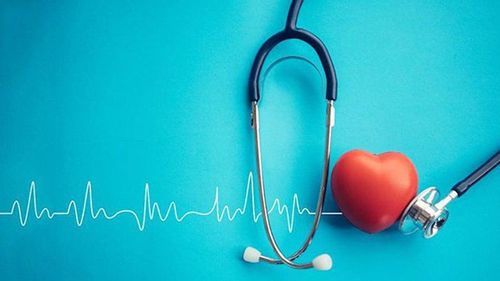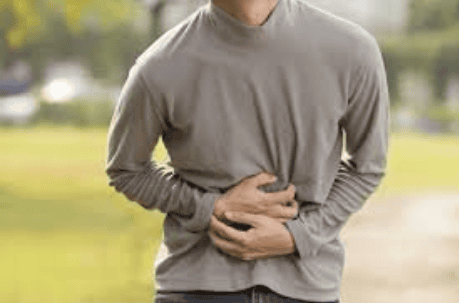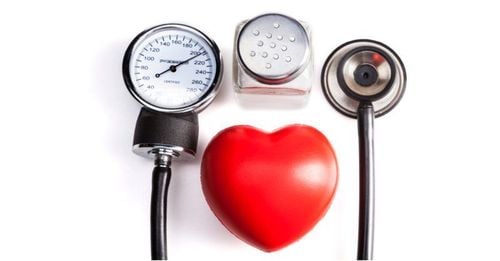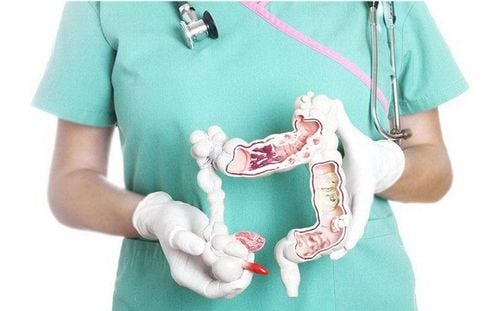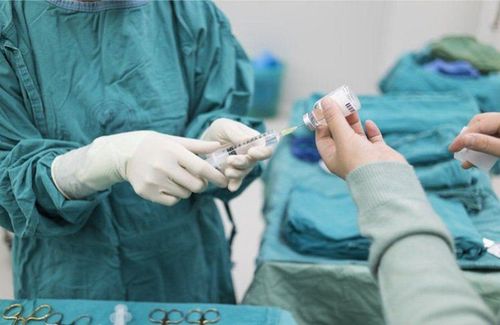This is an automatically translated article.
Cardiovascular resuscitation is a comprehensive, systematic care process after a patient undergoes cardiovascular surgery. The primary aim of CPR is to attempt to restore cardiac activity and ensure optimal systemic blood supply. Cardiovascular resuscitation also plays a role in detecting acute complications, thereby minimizing the risk of stroke and death for the patient.
1. The role of the cardiovascular resuscitation process after surgery
Cardiovascular resuscitation is a completely different concept from cardiopulmonary resuscitation or normal apnea resuscitation. This is the process of caring for, detecting complications and resuscitating patients after performing heart-related surgeries.
The time of cardiovascular resuscitation can be long or short depending on many different factors and causes, such as:
The first factor is the severity of the surgery and the patient's condition before surgery as if in the acute phase, the progression of cardiovascular diseases, heart failure with ineffective treatment, body weakness, pulmonary hypertension or some other comorbidities such as diabetes mellitus, preoperative renal failure ...; The second factor is the risk of complications such as low cardiac output, infections, lung-related diseases, kidney failure, neurological complications...; Some other factors affect the time of cardiovascular resuscitation: patients under 1 year of age or over 80 years of age should be closely monitored at least until the second postoperative day (note even if there are no complications). . In addition, the process of cardiovascular resuscitation and postoperative monitoring with patients with artificial heart valve replacement should be paid great attention, including monitoring of both clinical signs and subclinical results. The most important of which is to monitor the use of anticoagulants through testing of prothrombin ratio and INR.
2. Principles of Cardiovascular Resuscitation
The principles of the postoperative cardiovascular resuscitation process include:
Try to maintain adequate circulatory function after the patient has to adapt to a new hemodynamic state after cardiovascular surgery; Record all changes of the patient such as clinical signs, electrocardiogram, hemodynamics before complications or early detection of possible complications for the most effective treatment; Depending on the patient's postoperative progress, additional paraclinical tests are indicated, thereby giving the most accurate diagnosis and early detection of the cause of complications. Patients need to be evaluated for the effectiveness of cardiovascular surgery and especially to prevent the risk of infection after surgery;
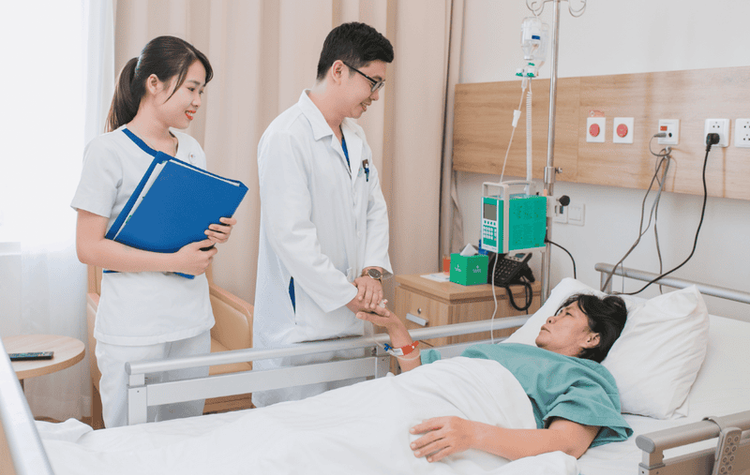
Hồi sức tim mạch cần theo dõi bệnh nhân sau hậu phẫu
The process of restoring and maintaining the function of the microcirculation system without harming the heart and other organs has the most important role in cardiovascular resuscitation after surgery. This process requires modern facilities to closely monitor the patient. Among them, the placement of a catheter into an artery (usually the radial artery) has advantages such as ease of blood collection, continuous measurement of systemic arterial pressure, and determination of the mean arterial pressure. normal... The above blood pressure indicators assist doctors in determining blood flow to tissues through the body's ability to self-regulate; EKG monitoring is mandatory to evaluate ST segment changes. In addition, other indicators to monitor include peripheral blood oxygen saturation to help determine blood oxygen saturation and limit arterial blood gas collection, exhaled CO2 concentration (EtCO2) to help supply blood oxygen. adequate ventilation physiological information, and at the same time alarm significance when ventilation is insufficient or the patient is completely out of ventilation; Insert a 3-way pulmonary artery catheter through the superior vena cava to measure right atrial, pulmonary, and pulmonary obliteration (PCWP) pressures, determine cardiac output and mixed venous oxygen saturation; Transesophageal Doppler ultrasound has the ability to perform both intraoperatively and postoperatively. This method helps to accurately determine the blood flow in the heart over time. Studies have shown that whether or not a patient has cardiovascular disease, transesophageal echocardiography can provide unexpected and significant information that changes the treatment strategy.
3. Possible disorders in cardiovascular resuscitation after surgery
When the patient finishes the cardiovascular surgery and is transferred to the intensive care unit, the doctor should systematically re-evaluate factors such as the preoperative medical history (especially taking note of the drugs being used and the function of the patient). heart function), any problems during surgery, vital signs and clinical signs at that time.
Then, the resuscitation process will be effective when the doctor identifies immediate goals, short-term goals and strives to achieve them. Some of the conditions that the patient often suffers during cardiovascular resuscitation:
Hypothermia when the body temperature ranges from 34 to 36 degrees Celsius. This condition is the result of active hypothermia in extracorporeal circulation; Peripheral vasoconstriction due to increased angiotensin threshold; Prolonged tremor during the postoperative warm-up period will increase metabolism, increase circulatory demand, increase CO production and may cause respiratory complications; Use muscle relaxants and sedatives to treat tremors.
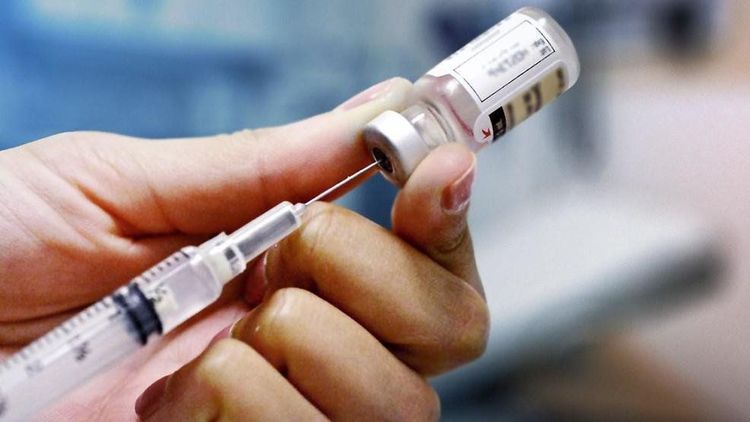
Trong quá trình hồi sức tim mạch có thể cần sử dụng một số loại thuốc theo chỉ định của bác sĩ
Patients in the process of cardiovascular resuscitation are usually warmed up for about 4-6 hours after surgery. As the body warms up and the patient regains consciousness, the primary goal of cardiovascular resuscitation is to assist in the recovery of the myocardium until it is fully capable of independently satisfying the body's needs. The most important of which is to determine cardiac output and try to bring the cardiac index to the normal range (cardiac index=cardiac output/body area).
In the early stages, the heart rate should be raised above 2L/min/m2 skin because if it is too low, it increases the risk of death. Patients with low cardiac index will have clinical symptoms of blue-violet and cold skin, purple patches on the skin surface (appearing first on the pillow), decreased urine output and sometimes signs of damage. Nerve damage, slow recovery after anesthesia. Low cardiac index and peripheral hypoperfusion are responsible for moderate metabolic acidosis (caused by lactic acid accumulation due to tissue hypoperfusion).
The oxygen saturation in mixed venous blood (SvO2) of a normal person is above 60%. If SvO2 is below 50%, the risk of death increases. Therefore, the SvO2 index needs to be determined along with the cardiac index and hemoglobin. In patients with poor progression (often leading to death), SvO2 plays an important role in the assessment of peripheral hypoperfusion, and the cardiac index in these patients is always reduced. However, the value of SvO2 is sometimes limited because this index does not describe the capacity of oxygen balance in tissues with fixed oxygen separation.
Organs such as kidneys, skin, and muscles at rest are capable of sustaining long-term survival in hypoperfusion because they can increase oxygen dissociation. In contrast, the heart and brain are two organs whose normal oxygen separation capacity is already close to the maximum at rest, and are therefore very vulnerable to ischemic injury due to the failure to respond to extensive oxygen separation. .
Postoperative hypertension is a common problem during cardiovascular resuscitation. Hypertension may be the result of many factors, including inadequate sedation, hypoxia, increased CO2, activation of cardiovascular reflexes, and vasopressor effects. Among them, excessive vasoconstriction is the most common cause of hypertension. Uncontrolled blood pressure increases the risk of aortic rupture, increases myocardial oxygen demand, decreases tissue perfusion, and causes endocardial ischemia.
Most patients need to use intravenous fluids during surgery, so when transferred to the ICU, the patient usually weighs 2-5kg more than before. Urine flow is higher in patients with good left heart function. If urine flow is reduced, intravascular volume or cardiac output is usually correspondingly low. Inappropriate secretion of antidiuretic hormones as a result of surgical trauma or in whom intravenous nitroglycerine, venous vasodilators, or afterload reduction is indicated. All of these factors tend to decrease urine flow.
Cardiovascular resuscitation is the process of comprehensive care, restoring cardiovascular function after a patient has had cardiovascular surgery to reduce the risk of complications. Therefore, patients should choose reputable medical facilities with modern medical equipment to ensure maximum safety.
Vinmec Cardiology Department always receives much praise and satisfaction from domestic & international customers, being pioneers in successfully applying the world's most advanced techniques in the treatment of heart diseases. circuit.
A team of highly qualified and experienced specialists: qualified doctors from Master's to Professor's and Doctor's degrees, reputable in medical treatment, surgery, interventional cardiac catheterization. Intensive training at home & abroad. In particular, Prof. TS.BS Vo Thanh Nhan - Cardiology Director of Vinmec Central Park was recognized as the first and only expert in Vietnam to be awarded the "Proctor" certificate on TAVI. State-of-the-art equipment, comparable to major hospitals in the world: The most modern operating room in the world; The most modern silent magnetic resonance imaging machine in Southeast Asia; The CT machine has a super-fast scanning speed of only 0.275s/round without the use of drugs to lower the heart rate; 16-sequence PET/CT and SPECT/CT systems help to detect early damage to cardiovascular organs even when there are no symptoms of the disease. Applying the most advanced advanced cardiovascular techniques in the world in treatment: Painless open heart surgery; Percutaneous aortic intervention without general anesthesia; Treatment of mitral regurgitation through the catheter has a success rate of 95%; Ventricular-assisted artificial heart transplantation for patients with end-stage heart failure prolongs quality of life beyond 7 years. Cooperating with leading cardiovascular centers in Vietnam and the world such as: National Heart Institute, Cardiology Department of Hanoi Medical University, University of Paris Descartes - Georges Pompidou Hospital (France), University of Pennsylvania (France), University of Pennsylvania United States)... with the aim of updating the most modern cardiovascular treatments in the world.
Please dial HOTLINE for more information or register for an appointment HERE. Download MyVinmec app to make appointments faster and to manage your bookings easily.




